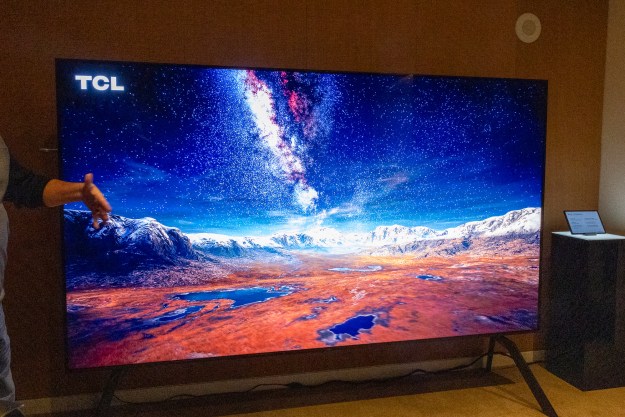Landing an affordable 4K Ultra HD TV is becoming easier and easier as the technology expands, but finding a 4K projector that costs less than a small car is still difficult. Thankfully, a few projector makers are finding new ways to achieve 4K resolution that won’t empty your child’s college fund. On Monday, Epson entered the competition with the new Home Cinema 4000, built specifically for home theater use at the friendly price of $2,200, undercutting Epson’s previous low-bar projector by a full $800.
How does the Home Cinema 4000 achieve 4K resolution at this price point? The answer is Pixel Shifting, Epson’s 4K enhancement processing which upscales 1080p resolution picture up to
These days though, 4K UHD isn’t the only criteria for great picture quality. In that regard, the Home Cinema 4000 also supports HDR, specifically HDR10. HDR is important, as it enhances the contrast of the picture, which also helps allow better shading for color accuracy. The projector boasts a contrast ratio of 140,000:1, and a powerful brightness of 2,200 lumens (that’s one dollar per lumen if you’re counting), so it should perform well in both low light conditions and well-lit rooms.
In addition, the Home Cinema 4000 uses a 3LCD engine, which essentially splits the light from the projector bulb with a prism, then uses three separate LCD panels to create the color, and display a continuous image. Most other projectors use a one chip DLP system, which uses millions of tiny mirrors and a super-fast spinning color wheel to produce a rapidly flickering image that appears solid to the human eye. DLP is an interesting solution, but one that suffers from some drawbacks, specifically a “rainbow effect” that can distort images, especially during fact action or movement — something 3LCD projectors don’t have to worry about. Epson claims the 3LCD tech enables the Home Cinema 4000 to achieve a wide color gamut that covers the entire Rec. 709 and DCI-P3 color spaces — or, in simpler terms, it can display a wider range of colors more accurately than even many TVs.
The Home Cinema 4000 boasts two HDMI ports, and an optical audio output so you can connect to an external sound system.
Epson’s announcement brings some welcome competition for the UHD60, an even more affordable 4K projector recently announced by Optoma. Like the Home Cinema 4000, the UHD60 also uses some clever tricks to display
Either way, this new round of 4K projectors at an HD price point is an exciting new advancement.
The Home Cinema 4000 is available now from select retailers, or directly from Epson’s online store.
Editors' Recommendations
- TCL prices its insanely bright, 115-inch QM89 4K TV at $27,000
- Sony debuts the Bravia 9, its brightest 4K TV ever, alongside new 2024 models
- Let’s discuss an Apple TV 4K with a camera
- Hands-on with the Belkin iPhone Mount with MagSafe for Apple TV 4K
- Belkin drops a $50 mount for iPhone video calls on Apple TV 4K


